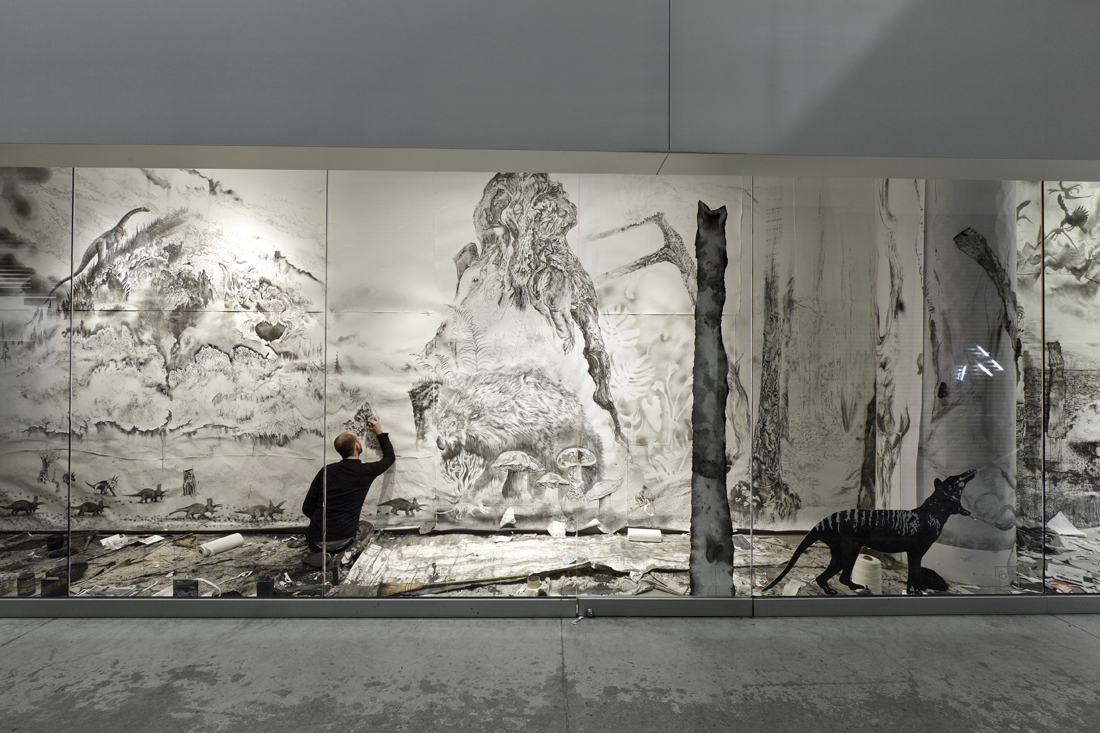Holocene|ˈhäləˌsēn; ˈhōlə-| adjective Geology of, relating to, or denoting the present epoch, which is the second epoch in the Quaternary period and followed the Pleistocene. Also called Recent. • [as n. ] (the Holocene) the Holocene epoch or the system of deposits laid down during this time. The Holocene is now. It quite literally means “completely recent.” It began 12,000 years ago, and in geologic time it is scarcely worth mentioning – a blink. It is the last stage of the Cenozoic era. What sets the Holocene apart is that it is not defined by evolutionary or geological phenomena, but by the impact of humans on the rest of the biosphere. We are currently experiencing the Holocene Extinction, which is human caused, and is the sixth mass extinction in the history of the Earth. Inside the vitrine at the Faculty of Fine Arts Gallery (FOFA,) I generated a 10’9″ tall, 115′ long drawing installation Within this long, glass hallway, I drew a geological timescape inhabited by endangered, extinct, and imaginary animals. Thinking of myself as an amateur paleoecologist, and of the FOFA vitrine as a large terrarium, I volunteered myself as a semi-captive specimen, and grew a paper forest. This indoor forest was not only a timescape, but also a mindscape – a realm of fact and fantasy, inhabited by monsters and other animals, extinct and endangered, throughout the span of life on Earth. Like a conscientious gardener, I tended to the space every day, for one month. The aim of this exhibition was to blur the perceived lines between human and animal, real and unreal, what exists now and what is gone forever. By treating myself as a specimen, I hoped to become more aware of my own animal nature, to examine human alienation from the natural world, and to question the commonly taken-for-granted attitude of human supremacy. I hoped also to increase general mindfulness of the fact that we, as homo sapiens, belong to but a single species among multitudes of Earthlings. From this perspective we can better know who we are as humans. Viewers were invited to comment and collaborate by mailing me postcards, drawings, etc., which were incorporated inside the exhibition.![]()
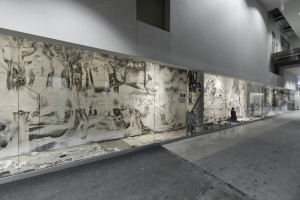
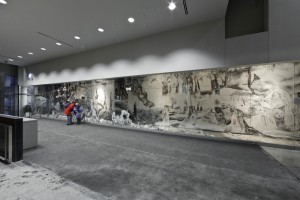

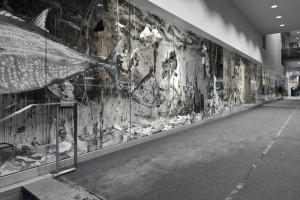
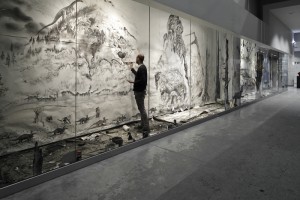
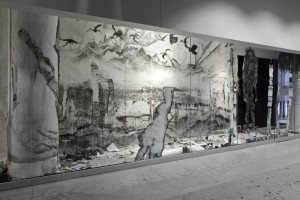
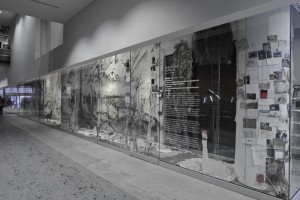
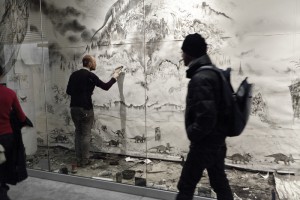
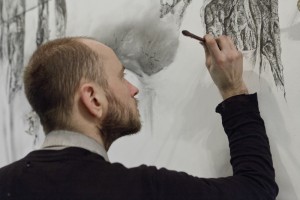
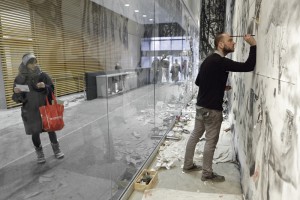

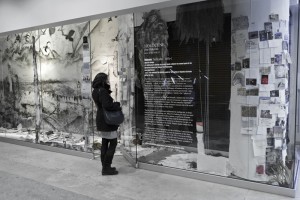
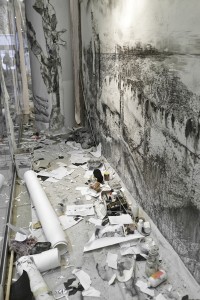
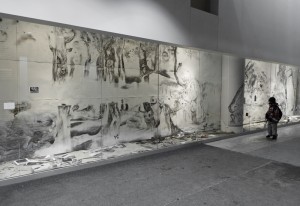
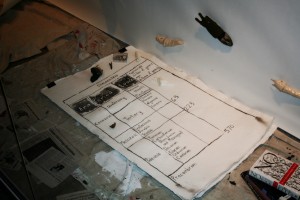
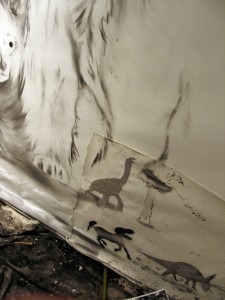

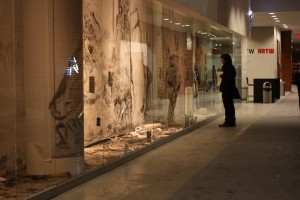
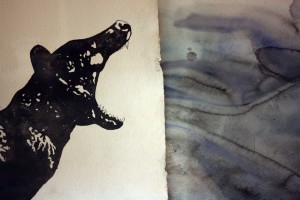
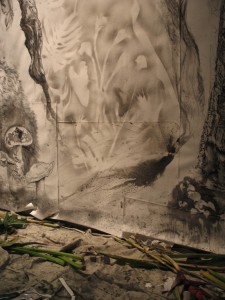
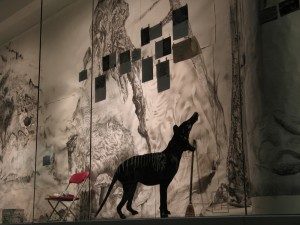
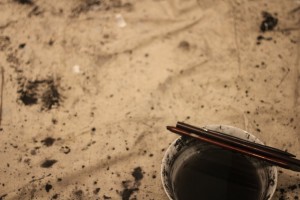
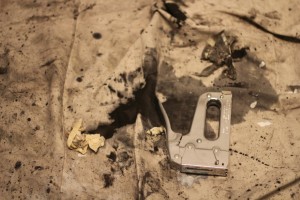
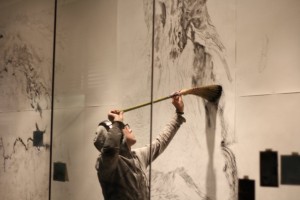
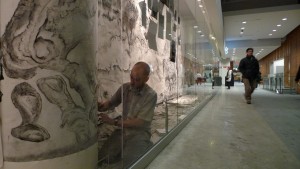
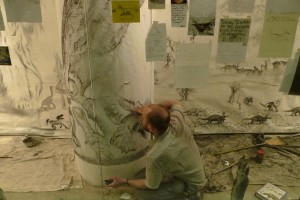
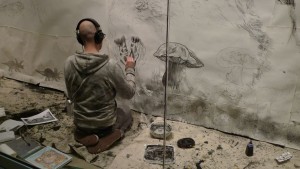

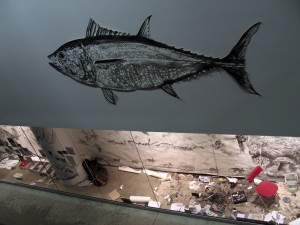
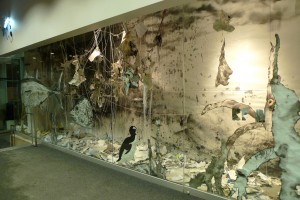
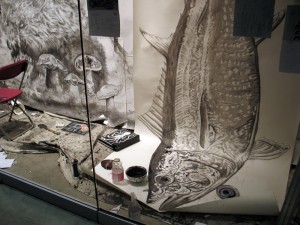
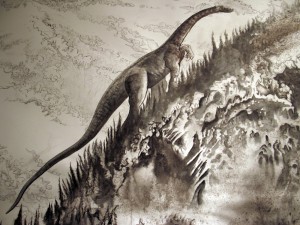
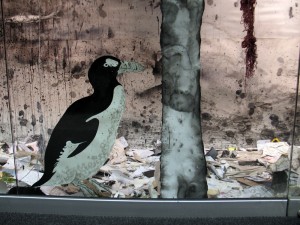
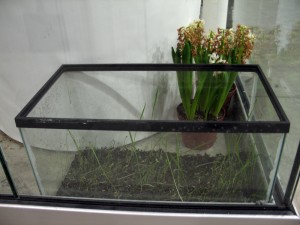
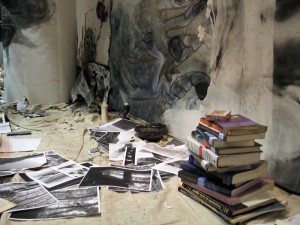
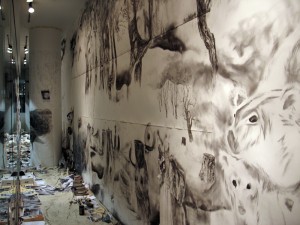
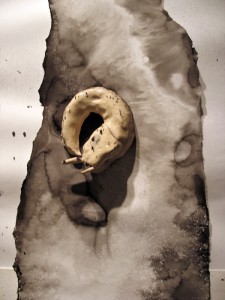
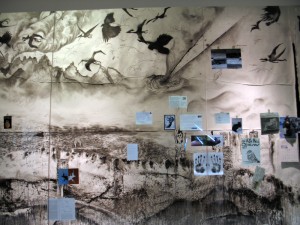
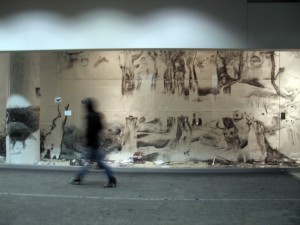
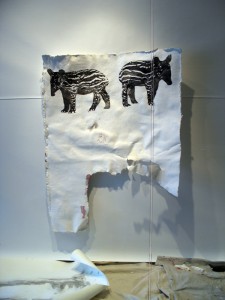
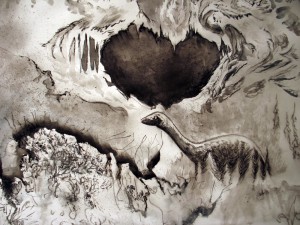
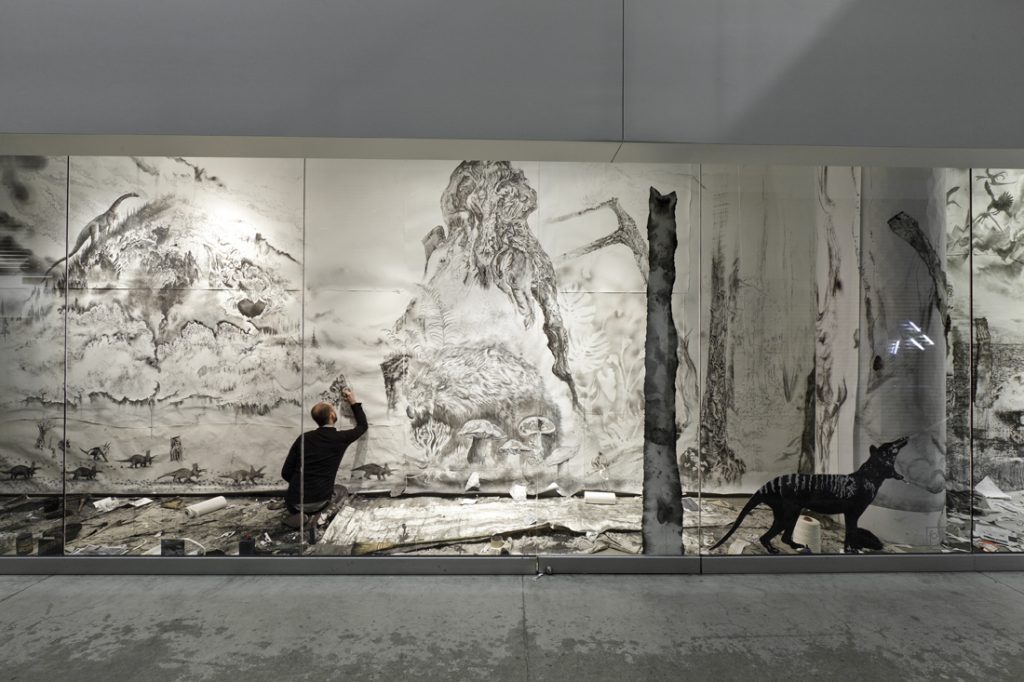
Holocene
